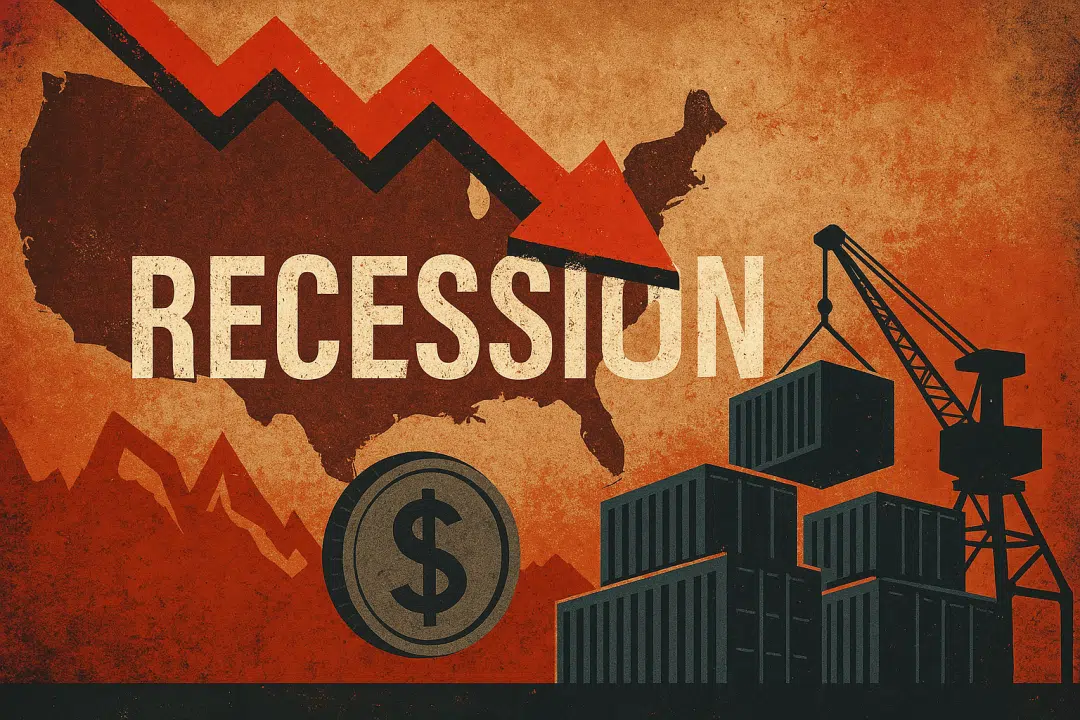Trump’s New Tariffs Could Push the U.S. Into Recession, Economists Say

President Donald Trump’s sweeping new tariff plan is raising red flags across the global economic community. Experts warn the strategy could tip the U.S. into a recession by the end of 2025, while driving inflation sharply higher and crippling consumer spending.
Tariffs Raise Risk of Recession
According to Moody’s Analytics chief economist Mark Zandi, the most aggressive version of Trump’s tariffs would lift the average import tax to 20%, a level not seen since the 1930s. Combined with expected retaliation from trade partners, this could lead to severe economic contraction both in the U.S. and globally.
“If the 20% average tariff is imposed and held for more than a few months, and countries retaliate in kind, the U.S. and global economies will suffer serious recessions,” Zandi said.
What Is a Recession?
A recession is commonly defined as two consecutive quarters of declining economic output. The National Bureau of Economic Research further describes it as “a significant decline in economic activity that is spread across the economy and lasts more than a few months.”
What the Tariff Plan Looks Like
Trump’s “Liberation Day” trade strategy includes:
- A 10% tariff on all imports
- Additional reciprocal tariffs of up to:
- 34% on China
- 20% on the EU
- 24% on Japan
- 30% on South Africa
- 26% on India
The plan responds to what Trump calls unfair foreign trade practices, including subsidies, currency manipulation, and high tariffs on U.S. goods.
How It Impacts Inflation and Spending
Economists agree that the tariffs are likely to reignite inflation, which had been trending downward since 2022. Pantheon Macroeconomics projects the tariffs could raise core inflation to 4%, even after accounting for retailers absorbing some of the costs.
JP Morgan’s Michael Feroli called the move “the largest tax increase since 1968.” He estimates it will add 1–1.5% to inflation and take real consumer spending into negative growth in the second and third quarters of 2025.
“This impact alone could take the economy perilously close to slipping into recession,” Feroli warned.
Rising Prices and Slowing Growth
According to Barclays, the Trump tariff package could push real GDP down 0.1% year-over-year by the fourth quarter of 2025. Meanwhile, the unemployment rate could rise to 4.6%. That level of economic contraction fits many definitions of a mild to moderate recession.
Analysts at Fitch Ratings and ING echoed those concerns. They noted that the U.S. tariff rate could rise from 2.5% to over 22%, the highest in more than a century. ING’s James Knightley said the move “will negatively affect the economy by raising import prices, tightening financial conditions, and weakening business confidence.”
What Businesses and Consumers Can Expect
Past experience suggests many companies won’t absorb the full costs. During Trump’s 2018 tariff surge, 60% of the cost of a 20% tariff on imported washing machines was passed to consumers. Similar outcomes are expected this time.
Estimates from ING show the average American household could see $1,350 in additional costs annually. This, combined with stagnant wages and rising interest rates, could cause a sharp pullback in consumer spending, which makes up about 70% of U.S. GDP.
Reactions and Political Pushback
The economic consequences are already influencing markets. The U.S. dollar dropped 1.7% against major currencies after the announcement. Meanwhile, consumer confidence fell in March to its lowest point since early 2021, according to The Conference Board.
Some conservatives are also expressing concern. House Speaker Mike Johnson said the government should focus on paying down the national debt before issuing any stimulus or relief.
“We have a $36 trillion federal debt. I think we need to pay down the credit card,” Johnson said.
Could Stimulus Offset the Damage?
Trump and allies like investor James Fishback have floated the idea of returning some of the $400 billion in projected tariff revenue to taxpayers in the form of DOGE stimulus checks. However, that plan remains uncertain and would still require Congressional approval.
Economists caution that if revenue is used solely to pay off the deficit, the U.S. “would be lucky to avoid a recession,” said Neil Shearing of Capital Economics.
📉 Final Outlook: Recession Likely Without Policy Reversal
While the full impact of Trump’s tariffs depends on how widely they’re implemented — and how other countries respond — most economists now see a recession as a real possibility for the U.S. in 2025. If the current trade policies stay in place and the inflation spike continues, even a mild economic pullback could deepen into something far more severe.
The biggest question now: Will Trump dial back the plan if the economic pain becomes too great? Markets — and millions of Americans — are waiting for the answer.

